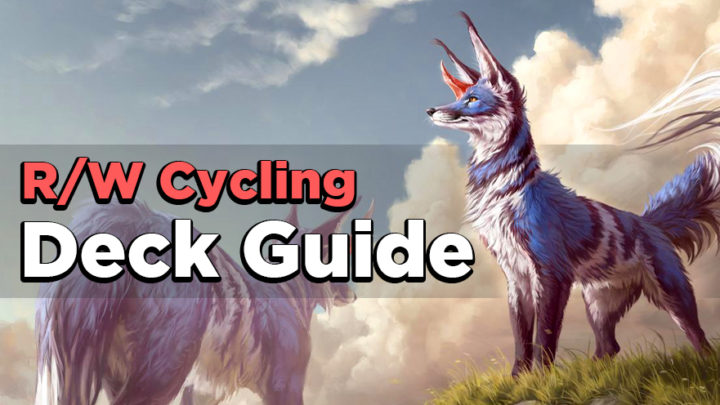I’ve been thinking these last few days about a popular phrase: “a good problem to have.”
Some of the best players in Magic have made earnest complaints about Zenith Flare — the all-star uncommon of Ikoria: Lair of Behemoths — and the cycling-heavy deck which has arisen around it. The deck is certainly winning a lot in the last week or two, and any deck which achieves a level of sustained success in the Twitter era is going to cop its share of complaints.
But when we stop and look at the cards in the cross-hairs, I can’t shake the feeling that Zenith Flare is the cure for Standard, not the disease. Or, at worst, a benign symptom. This deck is a positive force on several fronts; if any deck that beats up the ladder for a week becomes “a problem,” then this is the best problem we’ve had in a while.
GET ON YOUR CYCLES AND RIDE
Cycling is one of Magic’s most popular mechanics of all-time, and has appeared in many sets throughout the years. It gives non-blue colors the ability to dig past dead draws and use mana efficiently at instant speed — both massive advantages. Its universal helpfulness means cycling cards can go in any deck, but it’s slightly less useful in aggro; those decks care more about the lost tempo than finding any specific spell. As such, past cycling-focused decks have tended toward controlling or value-oriented plans; Onslaught’s Astral Slide is among the best-loved Constructed decks ever, and I’m a personal fan of Drake Haven control from Amonkhet.
Imagine my surprise, then, when the Ikoria cycling deck turned out to be R/W/x aggro! (Sort of.)
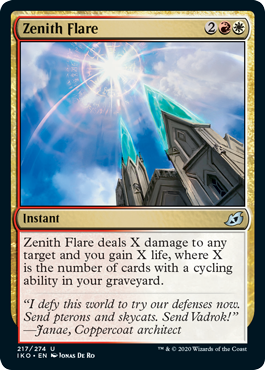
It’s true that the deck plays a strong array of cheap red and white creatures, most of which do typically combative Boros things. Flourishing Fox goes tall, Valiant Rescuer goes wide, Drannith Stinger pings for damage. But Zenith Flare (and, to a lesser degree, Lurrus of the Dream-Den) overshadows all but the most aggressive Fox draws, making this more of a combo deck with incidental creature pressure. With almost two-thirds of the deck cycling for a single mana(!), it becomes inevitable that you will draw multiple copies of this absurdly large Lightning Helix, and at this point, it’s hard to argue that it needs to do anything else to dominate.
THIS IS WHAT PEAK PERFORMANCE LOOKS LIKE?
We’ve definitely seen Standard formats dominated by some unlikely cards in the past — Cauldron Familiar and Arboreal Grazer are doing it right now, in fact! But if Zenith Flare and Flourishing Fox really are the best thing to do in Standard right now, it says more about how other cards have warped the format beyond recognition than the power of a one-trick deck relying on a four-mana burn spell.
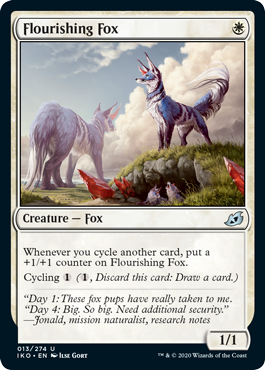
The cycling deck is novel, popular (drawing six cards a turn and winning with one spell are very hard things to do without smiling), and mercifully cheap to build in a way no Standard deck has been since Dominaria-era blue tempo. These factors do make it a little overrepresented on MTGA, and the play patterns are quite repetitive on the surface — as the opponent, you pretty much just see them cycle a lot and then eventually lose on your end step.
But there is a lot of skill involved in playing the deck at high levels, and its fragile, linear game plan would relegate it to fringe status in almost any Standard metagame. However, the presence of all-time power cards like Teferi, Time Raveler and Uro, Titan of Nature’s Wrath have skewed current decks away from playing interactive cards which would once have been essential. Spot removal and countermagic in particular are at an all-time low, since the current ramp suite is good enough to simply overpower aggro decks with bombs, sweepers, and incidental lifegain.
At least, it does in most cases. The uniquely scaling creatures in the cycling deck are the right tools to expose the holes in this metagame; you can’t simply chump Flourishing Fox (especially with Footfall Crater out), and you can’t gain enough life to be safe from repeated Zenith Flares. If the deck becomes big enough to force a direction in Standard deck-building that isn’t “more greed,” I consider that to be a huge win — even if Cycling itself falls out of competitive favor in the process.
DON’T REINVENT THE WHEEL
The cycling deck comes in a few varieties right now, as people continue to fine-tune their lists. However, if you look closely, these decks are much closer to identical than variants of other archetypes, such as the various Aristocats decks I wrote about last week. The main deck contains the 60 cards that any proficient Magic player would throw together if you asked them to build a cycling deck: all the cards that cycle or care about cycling, plus a few lands. Consider that the non-creature spells in your deck will be cycled over 90% of the time, and your relevant deck-building decisions come down to whether to splash and what to sideboard.
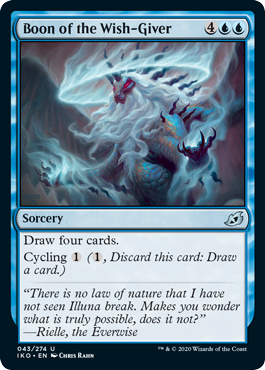
The motive to splash is obvious the first time you top-deck Boon of the Wish-Giver without blue sources in your deck and daydream about drawing four. It’s easy to see these uncastable spells as leaving power on the table, but so far, results show that having the chance to play them is more likely to distract you from your singular, cyclical goal.
Even a light splash will also hurt your mana base, especially if you include the new tri-cycle lands, which are counterintuitively poor here. When everything else in your deck cycles for one, cycling for three no longer seems like a huge upside — and you never want your land to enter play tapped. If you must splash, play some Hallowed Fountains and Steam Vents; the blue spells are the most likely to come good, especially Boon of the Wish-Giver, as the archetype’s sole way to rebuild a hand in long games.
THE THREE TESTS OF THE CYCLIST
When it comes to playing the cycling deck, I’m not going to pretend that the surface-level gameplay is more complicated than it seems. You’re effectively playing ~26 colorless cantrips, and your win condition incentivizes you to keep using them even if you could technically do something else. You will live and die in most match-ups by how efficiently you reach the stage where you can Flare on your opponent’s end step, untap, and Flare for lethal. But the incredible consistency and linearity does open up a different way to think about your strategy — you can pull back to a more macro level, knowing you will have three essential decisions to make in almost every game.
#1: WHEN TO MULLIGAN

Veterans of lightning-fast eternal formats like to joke that the mulligan choice is their “early game,” but that’s not really untrue for them, or for us! A huge tension inherent in this deck is the need to maintain hand size. Outside of the occasional Boon, you’re never going up cards, so every land or cycler you cast accelerates you toward an empty-handed standstill. But you can’t just not play cards, so it becomes essential to start with 4+ cyclers in hand.
You can usually mulligan to six to try and find a Flourishing Fox, since games where you have that critter on turn one can be very lopsided. But otherwise, you should snap off those keeps and rely on the heart of the cards to deliver you. Don’t worry about needing to have all your colors or the first Flare in hand — you’ll cycle into them sooner than you think.
#2: WHEN TO PUSH
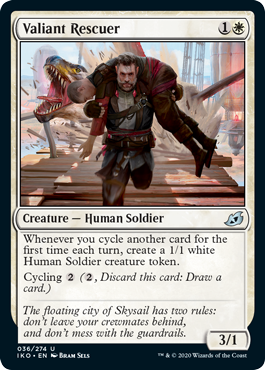
As mentioned, this archetype has an odd relationship with its one- and two-drop creatures. While most burn decks in Magic want to play their creature threats first to start chipping in, we neither depend on nor are especially capable of doing that.
While turn one Flourishing Fox absolutely steals games, casting an early Drannith Stinger or Valiant Rescuer is just wasting mana on a play opponents can interact with. Or worse — you might leave one stranded on board against a blocker, where it can’t dig you to your next Zenith Flare and doesn’t power up its damage.
That’s not to say that you should never try and get into the red zone with this list. Just don’t stop drawing cards, and especially don’t cast the last cyclers in your hand just to present a board. The best times to push are when you can build up enough mana to drop several creatures at once, and then cycle immediately to ensure you get some triggers. Often, your push will play out over two or three turns; this is usually the best time to play Lurrus as well, effectively adding two “free” creatures to your pop-up army.
#3: WHEN TO PULL THE TRIGGER
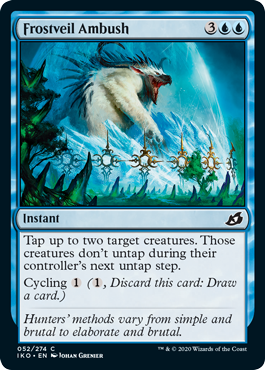
Unsurprisingly, the thing you will devote the most attention to when playing the Zenith Flare deck… is Zenith Flare. It’s sometimes refreshing to have such clarity in your gameplan: you get four of these in your deck, and unless you really ambush somebody with an early Fox, those are the four chances you have to win! Since you won’t have time to draw into all four in most games, it’s safe to assume that you’ll need to get 15+ face damage off your first pair of Flares to win. Hold onto them early, even if it means passing the turn without using your mana or getting slapped by opposing threats.
That being said, there are definitely some situations where you just have to drop a Flare defensively to stay alive — especially to take out an enemy Narset, Parter of Veils. Having to draw just one card per turn is absolutely brutal, and unless you’re able to work your way to a board advantage and attack her, you’ll have to unload any Flare currently in hand to get your engine moving again. In fact, the looming threat of Narset is one of the best reasons to run out your two-drops early in match-ups where you expect her.
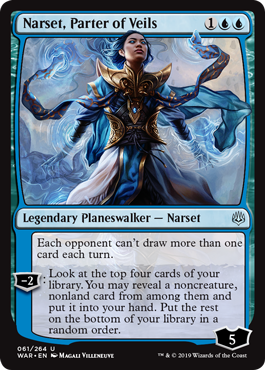
If you’ve committed to pushing with creatures, it can also be the right move to use Zenith Flare on a blocker rather than the face. This usually matters against Uro, who is large enough to shut down our offense single-handedly and who generates enough life to hurt long-term confidence in your Zenith Flare plan. Even if the sum of your attacks adds up to less than the Flare damage, forcing them to recommit to the board usually justifies the play.
When not pressured by giant creatures or prison effects, it’s usually right to wait and cast your lethal set of face-Flares close together. But there is one other exception: some close games will find you one Flare short of a win with the other Flare waiting in hand. But casting two Flares together costs mana you don’t always have. So instead, you can commit to a Flare on their end step and untap with full resources to take advantage of any top-deck. If you get onto that Flare, you win! But if you draw a cycler, you can now dig a few cards deeper while still being live to win with your last 2RW. This line is a little better in the Jeskai deck, since both Frostveil Ambush and Boon of the Wish-Giver can be high-impact draws with full mana open.
LEARN TO STOP WORRYING AND LOVE THE FLARE
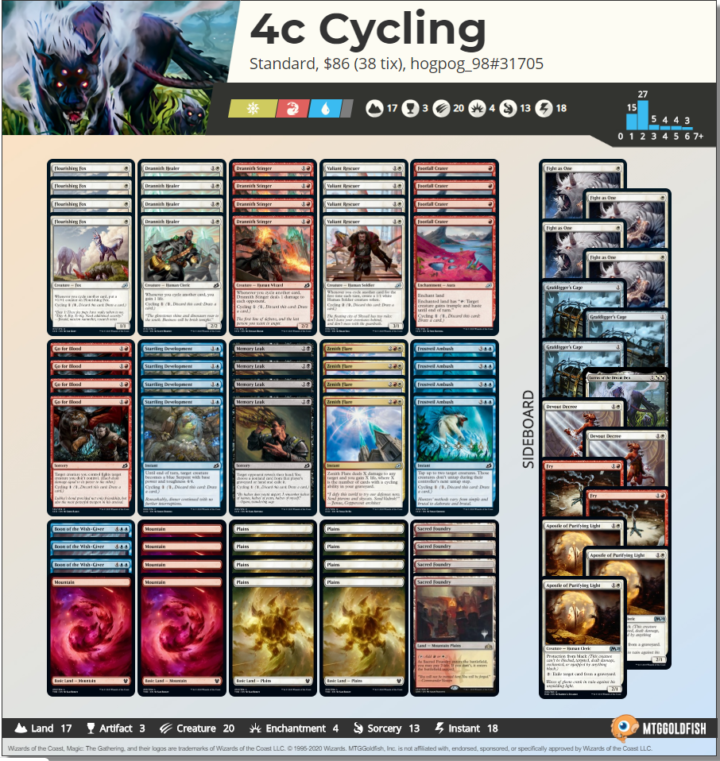
Order the full list from Card Kingdom or export it to MTG Arena.
Whether you see it as a welcome tool for budget players to punch up in Standard, a brutish and uninteresting ladder bully, or a lethal countermeasure for a bloated metagame, the RWx cycling decks are firmly established in Ikoria Standard. While it may eventually become too popular for its own good and suffer against heavy countermeasures, getting that much recognition in one of the highest-powered Standard formats in Magic history is an achievement for draft chaff everywhere. Let’s celebrate this unlikely pile of commons for as long as we can!

Tom’s fate was sealed in 7th grade when his friend lent him a pile of commons to play Magic. He quickly picked up Boros and Orzhov decks in Ravnica block and has remained a staunch white magician ever since. A fan of all Constructed formats, he enjoys studying the history of the tournament meta. He specializes in midrange decks, especially Death & Taxes and Martyr Proc. One day, he swears he will win an MCQ with Evershrike. Ask him how at @AWanderingBard, or watch him stream Magic at twitch.tv/TheWanderingBard.

